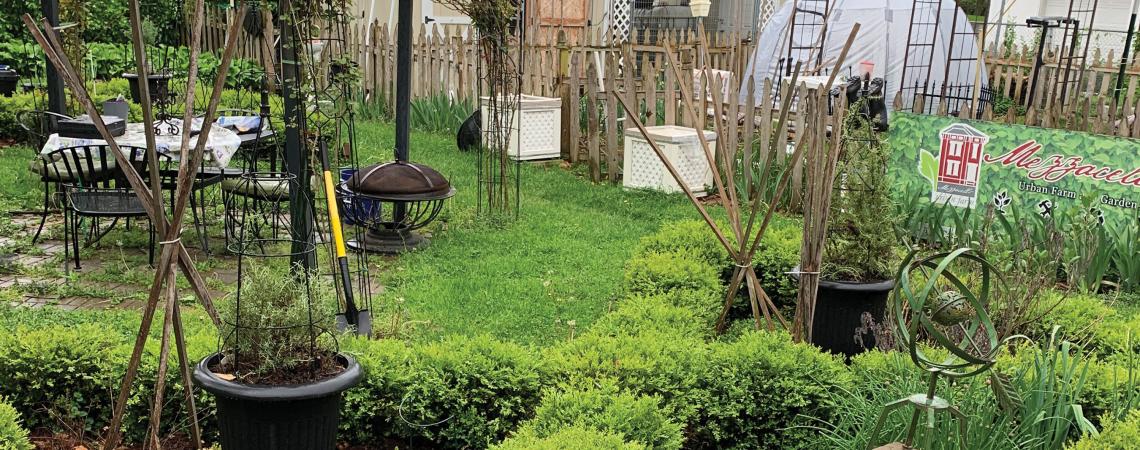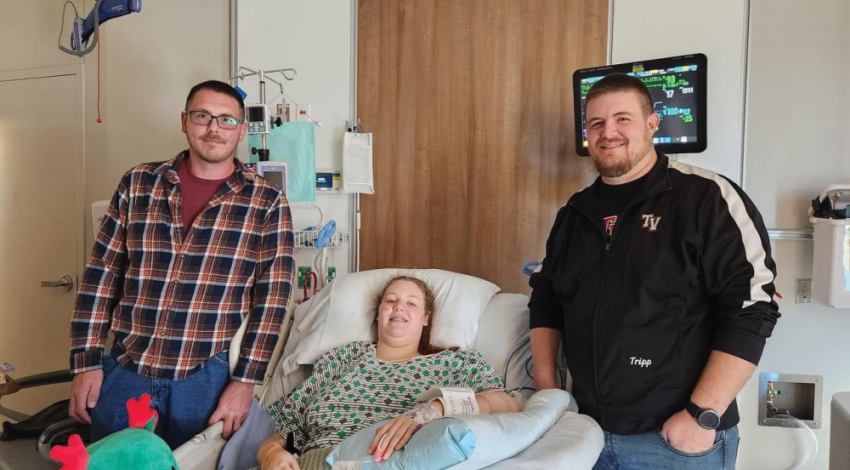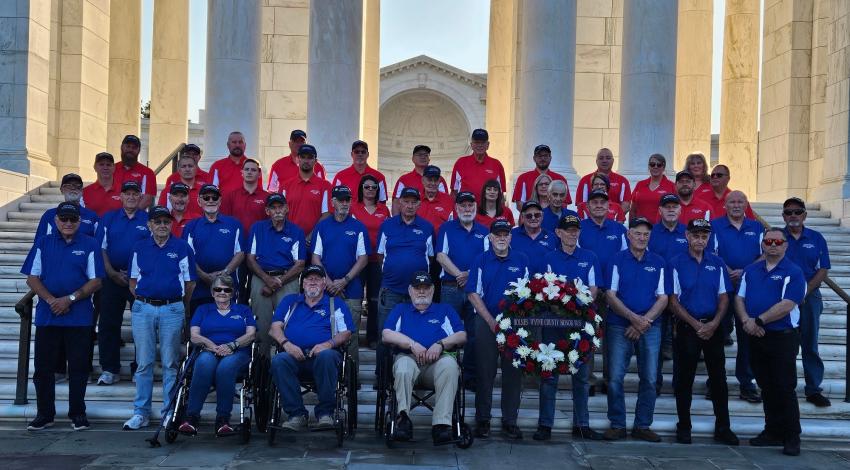A stroll through this Ohio farm leads you past a lovely formal garden, a koi pond, and two fountains before you reach the medicinal, culinary, and potager gardens. A bit later, your tour also takes you by robotic systems and a bioreactor — a high-tech composting tower built for Project Martian, a creative exploration for growing zero-dirt food on Mars.
This is not your typical farm.
“We’ve combined 18th-century farming traditions with 21st-century technology,” says Jim Bruner, co-owner of the urban farm near downtown Columbus. “Our mission here is to grow, maintain, sustain, and explain.”
Hamid Ahmed's biodome project occupies a small space at Mezzacello (photo courtesy of Mezzacello).
Ten years ago, the property was an abandoned 1868 Italianate house and two adjacent overgrown lots. After much planning, digging, and planting, Mezzacello now produces high-quality, nutritious food and serves as a learning lab where Bruner and local students test ideas. The name Mezzacello (“little Monticello”) pays homage to another lifelong innovator: Thomas Jefferson, and his agricultural experiments at his iconic Virginia estate.
In the summer, students attend weeklong camps at Mezzacello to learn about biotechnology, bioengineering, biochemistry, and renewable energy. For many campers, it’s the first time they connect the dots between growing and eating healthy food.
“A lot of kids think eating is the same thing as nutrition,” Bruner says. “At camp, they start to understand the idea of ‘garbage in, garbage out,’ which is true for what they eat and how they feel as well as what they feed other living things.”
Health is one of the reasons Bruner, who is originally from California, became an urban farmer. He’s also naturally drawn to anything involving innovation, systems, and design thinking. By day, he works at the PAST Foundation, a nonprofit that helps bring real-world science and applied STEM into the classroom. He’s also former president, executive director, and board chair of Ohio Invention Convention and an enthusiastic cheerleader for ideas — from his latest experiment at Mezzacello to a student inventor’s biodegradable golf tee or insulin plunger.
While Bruner and his husband, Rick Riley, cover most of the farm’s expenses, the Ohio Farm Bureau, Scotts Miracle-Gro Foundation, and the Columbus Foundation help fund their projects.
Currently, Bruner and Hamid Ahmed, a Mezzacello intern, are building a biodome prototype. Ahmed is exploring ways to end global hunger as part of his Medical Pathways project at Metro Early College High School.
“It hurts to know that so many families do not have enough food,” Ahmed says. “The biodome is so people don’t have to depend on an outside source to survive.”
When finished, the structure will contain complex systems for growing hydroponic gardens and raising chickens. If their biodome proves cost-effective, sturdy, and easy to use, it could feed people worldwide.
Building and problem-solving are fun challenges for a bright high school student, but Ahmed is also developing a critical new skill: perseverance. Setbacks are part of any massive undertaking, and a great mentor can make a world of difference.
“It does get frustrating, believe me. I am not the most patient guy, but Jim is one of the best teachers I’ve ever had. He’s helped me understand that I have to be patient,” Ahmed says. “I have a goal that I want to get to, and I know that if I keep pushing through, the right angle will come to me — and it will be worth it.”











